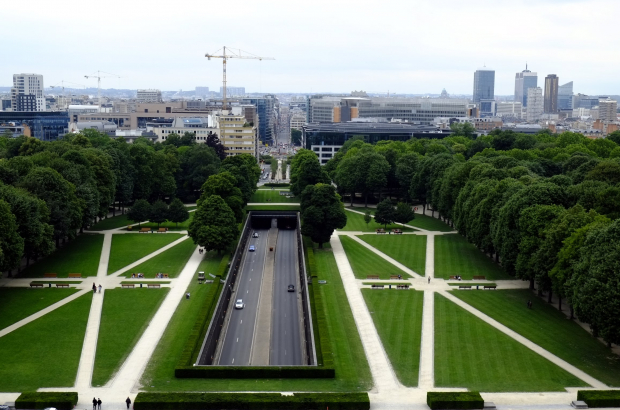- Daily & Weekly newsletters
- Buy & download The Bulletin
- Comment on our articles
Report into European Quarter development plan prompts rethink on towers
The Brussels government has announced that it plans to scale back its plans for the PAD Act development on the capital’s Rue de la Loi in the European Quarter after the Regional Development Commission published its concerns over the height of some of the project’s planned tower blocks.
The development plans include the building of up to 14 towers, six of which would be more than 120m high and one with a height of up to 155m.
In its report, the commission said it cannot support the project in its current form, which it said would have too much of an impact on neighbouring residential neighbourhoods, the environment and mobility. In addition, the current Covid-19 crisis has reduced the need for the towering buildings planned for the site, due to an increase in teleworking and an acceptance of its viability reducing the need for office space. In the commission’s view, the development project should therefore be redesigned in response to these new challenges.
In the original version of the plans, which were approved by the Brussels government after the first reading, the project would include 185,000m² of housing, three hectares of public space and a significant proportion of "local and metropolitan facilities".
The project is based on the plans, submitted in 2008, of French architect Christian de Portzamparc who wanted to reduce the current 'canyon' effect of the Rue de la Loi by building higher and providing more green and open space between the buildings.
Over the past year, several neighbourhood committees and the Royal Commission into Monuments and Landscapes have expressed their concerns. They did so as part of a public inquiry, which took place last year. The height of the towers, the density of the neighbourhood, the social mix and the public space were of particular concern to the various organisations.
Now Brussels minister-president Rudi Vervoort has said that he is committed to modifying the project after the Regional Development Commission’s findings, paying particular attention to the issue of the towers. Vervoort, who says he is aiming for a project that "makes sense for all citizens", hopes that the height of the buildings can be reduced to limit the possible impact on the surrounding neighbourhoods. In addition, he wants to increase the share of social housing in the European quarter to 15% and provide more space for active road users.
"The main objective of this large-scale urban project for the Brussels region is to improve the living environment and public space, to create housing and thus above all to create a social and functional mix in this district that is largely abandoned after business hours," Vervoort said.
"We are of course aware that the vision of the city has evolved between 2008 and today,” he continued. “This has prompted the region to adjust downwards the decisions taken in relation to the built-up space and its density.
"However, the crisis we are experiencing today and the consequent breakthrough in teleworking are sometimes used to paint a sceptical picture about the future of the offices, but it is too early to draw any conclusions."
Pierre-Luc Vervandier of the European Neighbourhood Action Group says that the minister-president’s commitment to amend the project is not enough. "If it's just a matter of reducing the size by a few metres, it doesn't suit us at all,” he said. “We want a neighbourhood without towers."
















